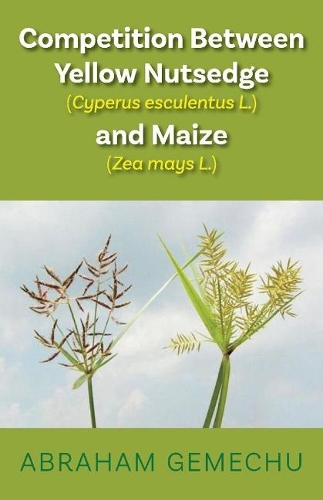
Competition Between Yellow Nutsedge(Cyperus esculentus L) & Maize (Zea mays)
(Paperback)
Publishing Details
Competition Between Yellow Nutsedge(Cyperus esculentus L) & Maize (Zea mays)
By (Author) Abraham Gemechu
Edited by Paul L. G Vlek
Edited by Baerbel Gerowitt
BookBaby
BookBaby
28th February 2020
United States
Classifications
General
Non Fiction
Physical Properties
Paperback
100
Width 139mm, Height 215mm, Spine 7mm
127g
Description
This book covers an extensive knowledge of the author with regard to the competitive interaction of crop plants and a perennial noxious weed of the world. The author served as crop protection expert for many years in Ethiopia before he gets admitted for post graduate study at the Institute of Tropical and Subtropical Agriculture under the University of Goetingen in Germany. The results of an extensive research work at the institute were documented to demonstrate the presence of competition between yellow nutsedge (Cyperus esculentus L) and maize (Zea mays L) plant. So far, all loss of yield by yellow nutsedge was conducted using a herbicide and other means of control when the weed is growing naturally with crop plants. However, in this research the amount of yield loss to maize plant because of competition with the weed was determined without using herbicide and by maintaining different population of the weed to grow with a constant number of crop plant in a controlled environment. The study covers not only the loss of yield because of the weed but also the factors of competition such as nitrogen use efficiency and water use efficiency. The flow of nitrogen fertilizer both in the plant and in the soil was traced using the N-15 isotope. This experiment was very expensive had it been not financed by University of Goetingen and the Germen Academic Exchange of Germany (DAAD). Therefore, I want to share my experience in conducting this experiment and its results to those academic institutions, farmers, and research institutes who are interested in the subject.
Author Bio
The author used to be a post graduate student at the University of Goettingen in Germany when the research was conducted. At present, he is living in United States working as agriculture specialist under United States Custom and Border Protection previously called USDA Animal and Plant Health Inspection Service. He has many years of experience in plant protection, plant quarantine, pest identification and research. His advisors Professor Paul P.L.K Vlek and Professor Baerbel Gerowitt were a lecturer and a scientist at University of Goetingen during his time of study.He used to be Full Professor and Director, Institute of Agronomy in the Tropics, Georg-August-University, Goettingen, Germany. Tought courses in Tropical and Subtropical Agroecology andFood and Horticultural Crop Production, and led the institute with six permanent staff members and about 15 Ph.D. students employed in various collaborative projects overseas. The Institute addresses aspects of sustainable agriculture and natural resource managementShe used to be Full Professor, lecturer and weed scientist at George-August-University of Goettingen, Germany.
